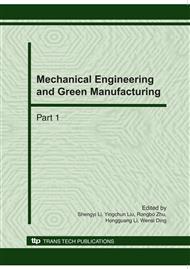p.1761
p.1765
p.1770
p.1775
p.1780
p.1784
p.1788
p.1794
p.1800
Effects of Cr Doping on the Structural and Electrochemical Properties of V6O13
Abstract:
It has been demonstrated that V6O13 is a very attractive cathode materials for rechargeable lithium-ion batteries. Cr3+ was doped to improve its electrochemical property. CrxV6O13(x =0.01~0.05) cathode materials were prepared using NH4VO3 and Cr2O3 as raw material by solid phase method in argon atmosphere. The best electrochemical properties of CrxV6O13 were obtained under the optimum conditions as follows: the argon flow rate is 85mL/min, the heating rate is 5°C /min, the holding time 1h at 180°C, 1h at 300°C and 30 min at 450°C. The structural and electrochemical properties were examined by means of X-ray diffraction, SEM and charge–discharge tests. The results demonstrated that the powders maintain double cavity chain structure regardless of the chromium doping. When the Cr doping of x = 0.03, capacity is highest. Maximum initial discharge capacity is 334mA•h/g, 80% of theoretical capacity. During discharge process there is 6.5 Li+ embedded in the Molecules of doping. After discharge cathode became Li6.5Cr0.03V6O13.
Info:
Periodical:
Pages:
1780-1783
Citation:
Online since:
October 2010
Authors:
Keywords:
Price:
Сopyright:
© 2010 Trans Tech Publications Ltd. All Rights Reserved
Share:
Citation:


